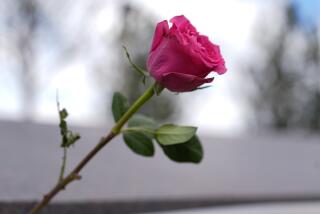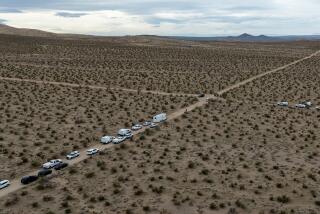For survivors of San Bernardino terrorist attack, it’s a daily struggle against memory
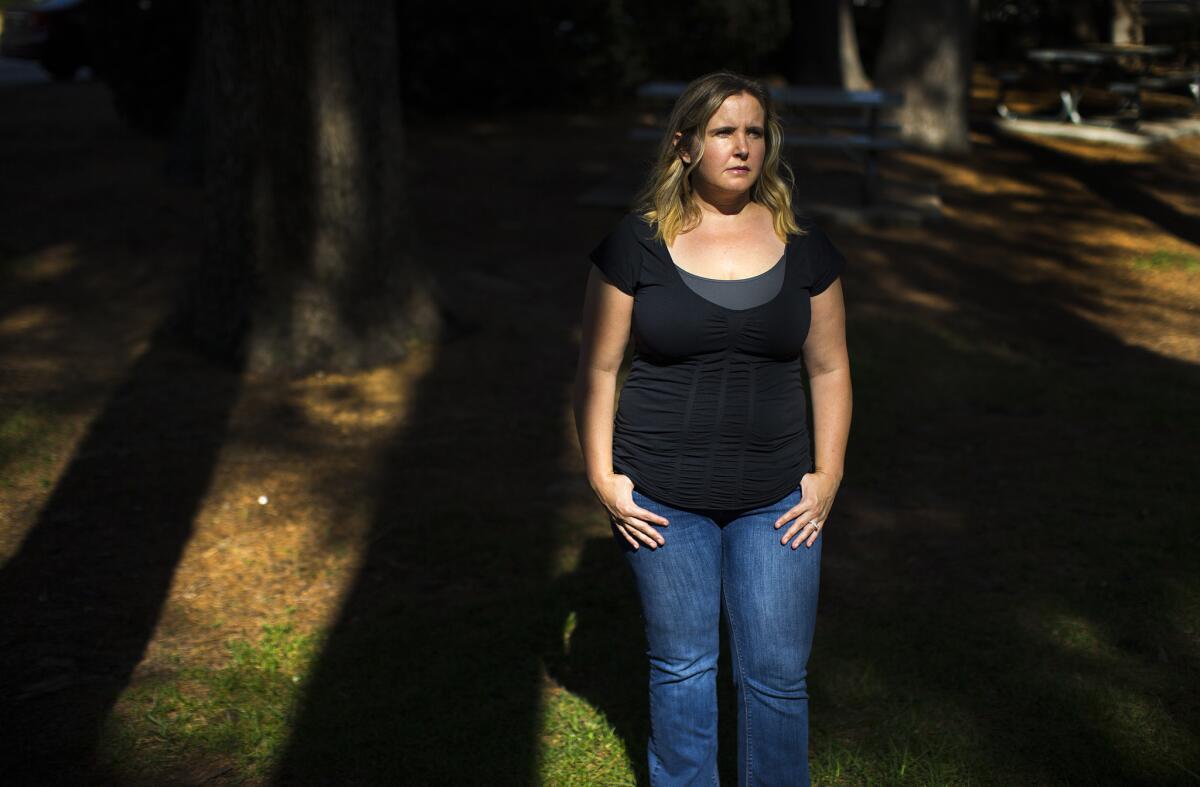
- Share via
Tracie Thompson focused hard on a row of shopping carts as she approached the supermarket, her brain struggling to stave off a memory, when the crack of a gunshot echoed in the distance.
It was a not terribly unusual sound in San Bernardino, a city with one of California’s highest crime rates. But it sufficed to send Thompson crashing to her knees. Her husband wrapped his arms around her.
It was Dec. 2, 2015 again, inside a conference room, a man and a woman spraying bodies with bullets.
Six months had passed since Syed Rizwan Farook and his wife, Tashfeen Malik, launched their attack at the Inland Regional Center, killing 14 people and injuring 22. Thompson, 49, was among the wounded, a bullet slamming into her thigh, where it remains to this day.
For the survivors, adapting to the world after their brush with death has been a daily struggle. Thompson sits with her back to the wall in crowded rooms and she keeps a mental tally of every exit; she cries every day. Sally Cardinale trembles at the sound of slamming doors and wrestles with violent dreams. Jessica Ballesteros hears the sound of her own screams inside the conference room.
They were living through their own trauma of a terrorist attack when another one, in Orlando, brought back fresh memories of the bloodshed they endured. And the world’s attention shifted again.
“You feel forgotten, like our friends are forgotten,” Ballesteros, 35, said. “We deal with it every day, but the world has moved on.”
Sometimes, you read these articles and you see there’s 22 survivors. For us, there were 57 in that room. We get lost in it.
— Jessica Ballesteros, San Bernardino attack survivor
Just days after the San Bernardino attack, some of the survivors began to meet. A former health department director opened up her home for a week straight, said Hal Houser, one of the survivors. It was the first time anyone who had been in the conference room gathered to talk as a group.
“It was like an office party, but about a grim subject,” Houser said. “You got together and it was ‘How are you?’ and ‘Where were you when it happened?’ and ‘Have you heard about so and so?’ ”
Then, in February, the meetings moved to The Rock Church, less than two miles from where the mass shooting happened. They became therapeutic gatherings for people who had seen co-workers and friends murdered, who narrowly escaped their own demise and then had to gird themselves for the procession of funerals.
“How do you respond when somebody walks up to you and believes they have a right to know what happened? Or when people say, ‘How are you doing?’” Thompson said. “We’ve helped each other respond to those things without sounding curt or unappreciative.”
Full coverage: San Bernardino terror attack »
In the months since the terrorist attack, some returned to the county office. They bonded over the banal, bureaucratic hassles that mass murder and carnage unleashes — the workers’ compensation forms and meetings with human resources. Some returned to work before they could get appointments with therapists because of long waits and red tape, Ballesteros said.
“How were we able to get into work, people without mental help? It just seems unfathomable that they think we’re OK,” she said. “If someone broke their arm you wouldn’t let them walk into work without an X-Ray.”
Ballesteros said the screams that she can still hear echoing in her head the day of the shooting only stopped during a brief pause when the killers stopped to reload. Her eyes locked on Farook.
Less vivid are her memories about how she was able to scramble out of the room and into the hallway and meet a colleague outside of the building. There were more casualties of the attack than the people who were killed and wounded, she said.
“Sometimes, you read these articles and you see there’s 22 survivors,” Ballesteros said. “For us, there were 57 in that room. We get lost in it.”
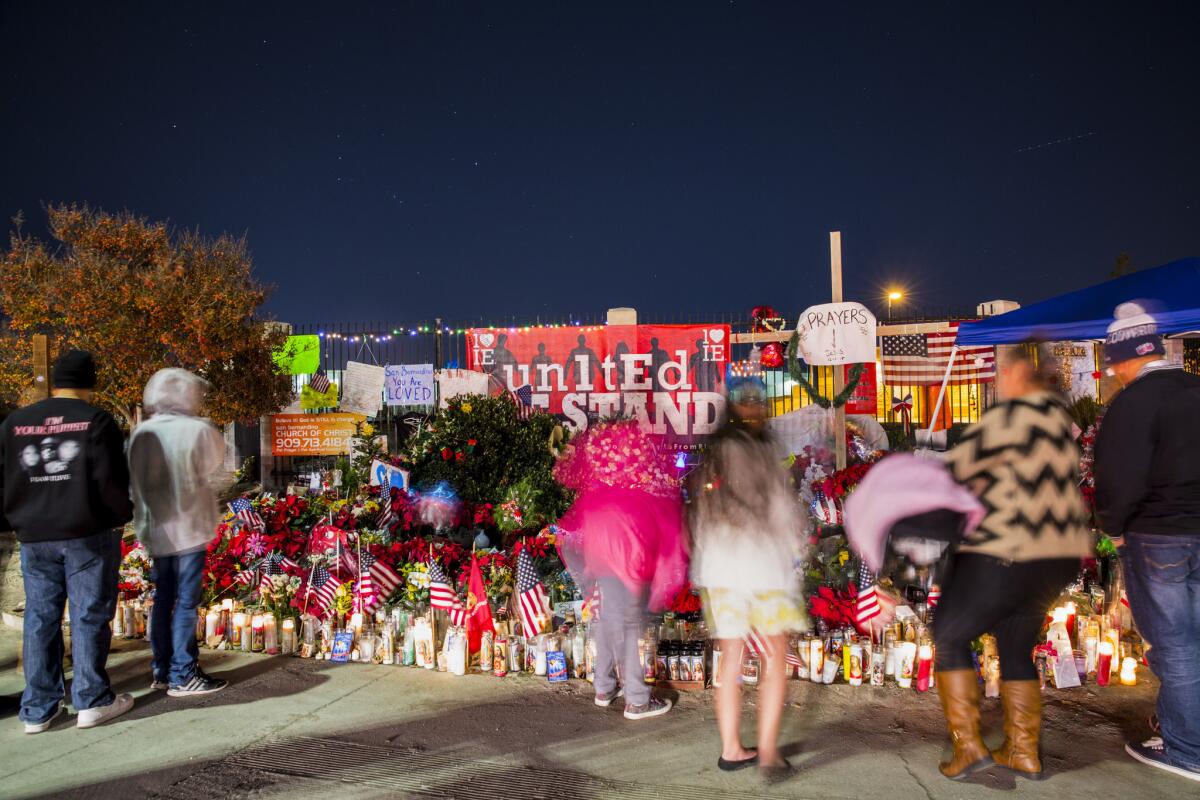
Cardinale, who went back to work in May, said she can’t shake the dread she felt hiding in a bathroom during the attack. She huddled with three other women in a stall. Drywall exploded off the walls from all the bullets. Everyone who had been sitting at her table had been killed or badly injured.
“They say you pray before you die, but I thought about my kids,” Cardinale said. “I thought about my husband, because his previous wife passed away and I thought he wouldn’t be able to handle that, losing another.”
In early June, as she stood in line at the bank, she couldn’t help but keep an eye on a man who seemed to be “looking around too much.”
“Where do you draw the line? How do you protect yourself without looking crazy?” she said. “There’s days when I’m rocking on the edge of the bed and pulling my hair and crying. I think it’s hard for people to understand that.”
On a recent Monday, Thompson met with Cardinale, Ballesteros and a handful of other survivors for lunch. Wearing an “SB Strong” pin, she mapped the room before sitting down, nervously rubbing her shoulder. Every person who walked into the cafe made her more anxious.
Diana Almond, who helped organize the fateful meeting at the Inland Regional Center, said new details of the attack — repressed memories, a therapist said — came to her two months later when she realized she had seen Tashfeen Malik.
Malik was dressed head to toe in black, Almond recalled. Her pants were tucked into her boots, which did not have laces. She had a small frame, Almond said, and bullet casings fell around her head like snow.
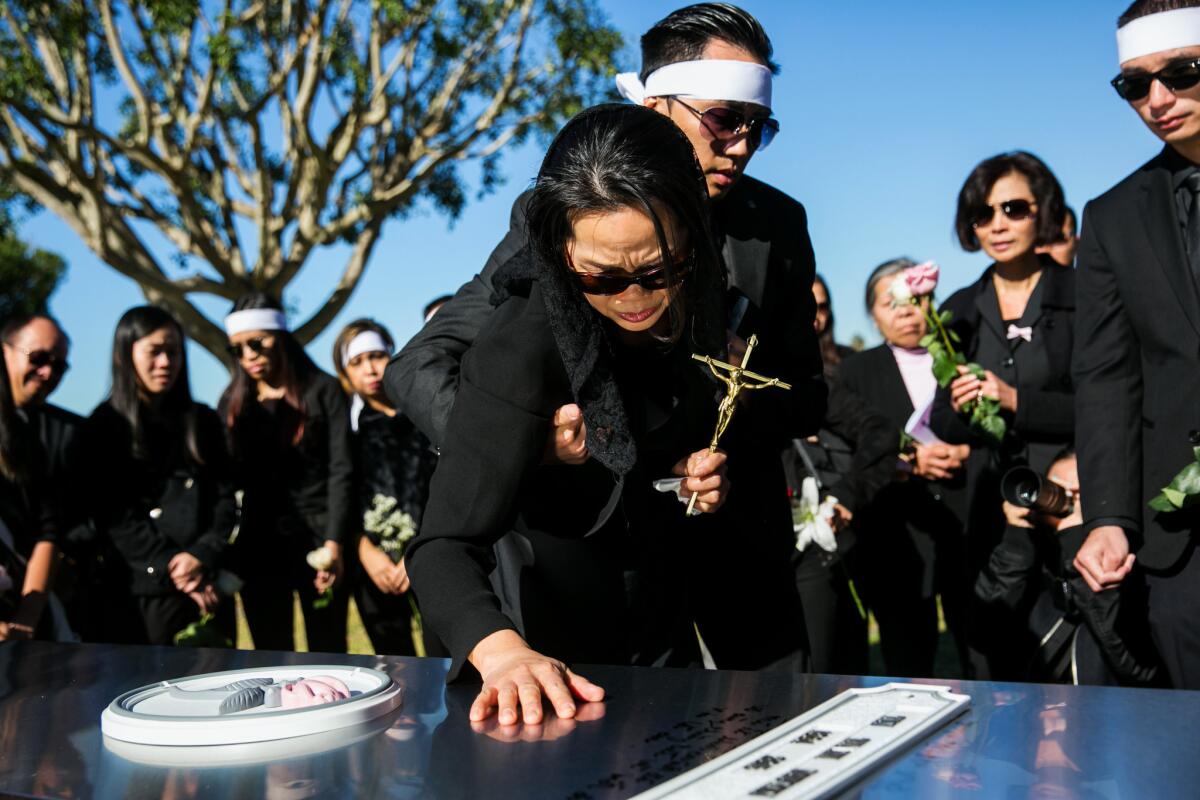
On June 2, the 6-month anniversary of the attack, Almond drove herself to work. She hadn’t realized what day it was until she parked her car. Then it hit her, and she began to sob.
When Omar Mateen walked into the Pulse nightclub in Orlando and massacred 49 people, some of the people who lived through the San Bernardino shooting skipped work the next day.
“They just didn’t even want to accept it again,” said Houser, 54. “Everyone needed to go see their psychiatrist.”
Any talk of recovery and closure is premature, Houser said. He likens that notion to removing one-third of his family members and “replacing them with surrogates, as if nothing ever happened.”
Houser recently took a trip to the grocery store. The cashier asked if he wanted to donate to the Dec. 2 victims’ fund.
He didn’t know what to say.
For more local news follow me on Twitter: @sarahparvini
ALSO
Bosnian Muslims in Southern California may not fit the stereotype but they feel the prejudice
Elite Republicans tried to ignore them. Now they’re shaping Donald Trump’s immigration policy
A push — and pushback — for new diversity rules in California’s business subsidy program
More to Read
Sign up for Essential California
The most important California stories and recommendations in your inbox every morning.
You may occasionally receive promotional content from the Los Angeles Times.

